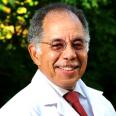Edwin Chapman, MD, a District of Columbia internist, understands that “innovation” is not just a buzzword conjuring up advancements such as stem cell research or cancer-curing treatments. Innovation may also include using telephones and video to help vulnerable patients during the COVID-19 pandemic.
The growing use and coverage of telehealth, once thought mostly as a tool to grow patient access in rural areas, has expanded Dr. Chapman’s ability to continue to care for hundreds of patients with a substance-use disorder (SUD) in the nation’s capital.
“When I started treating patients with buprenorphine 20 years ago, I was being sent patients by parole officers and was asked to treat their addiction, but these patients also needed mental health services, primary care and psychiatry,” Dr. Chapman said. “Treating only the addiction wasn’t going to completely rehabilitate them—you have to treat everything.”
What his patients needed was an integrated care model—and, for Dr. Chapman, “integrating” meant updating. He digitized his patients’ records and then equipped every exam room with a microphone and a webcam to transition to telemedicine.
His patients could come to one office while having multiple consultations with social workers, primary care physicians and psychiatrists. This approach offered one-stop shopping instead of what might have morphed into multiple bus rides and hours’ worth of childcare.
“Telemedicine was originally only seen as something appropriate for a rural practice—as a way to help patients who might not have a physician nearby,” Dr. Chapman said. “But the socioeconomic reality for many is that, even when a medical office is close, there are childcare costs, time off work, plus multiple bus and train fares to contend with. Telemedicine is useful in bridging those gaps, too.”
The in-office consults gave his patients access to a whole host of specialists and services while allowing Dr. Chapman to not just treat his patients’ SUDs, but also their chronic conditions such as diabetes, hepatitis C, HIV, hypertension and cancer.
“Telehealth has helped one of my long-term patients for at least 15 years now,” he said. “This model has helped him to stabilize his life.”
That patient, who asked to just be referred to as “Bill,” credits his honest relationship with Dr. Chapman for turning his life around.
“My life was using drugs, I destroyed my marriage, and it wasn’t until my second, or third time trying medication with Dr. Chapman’s help that I was able to start feeling better,” he said. “The people who know me say I look good, but I still have ups and downs. Dr. Chapman helps me prioritize my feelings and emotions—I wish there were more Dr. Chapman’s out there.”
Bill is one of about 260 patients Dr. Chapman sees.
“Treatment is about benefits that reverberate across the entire community,” said Dr. Chapman. “Beyond the health care savings of keeping patients with chronic conditions and comorbidities out of hospitals, there’s a reduction in criminal activities and homelessness. It’s helping my patients get back on their feet, find housing and jobs.
“It’s an economic model that shifts money from just housing these patients in jails, to providing them with the social services that allow them to regain control over their lives,” he added. “Bill has been with me for 15 years. He hasn’t been incarcerated or gone back to the emergency room. He got his life back, and in doing so, we have decreased reliance on medical services.
“For too long in the African American community, incarceration was seen as treatment. But that’s never worked. We have to change the model because medical treatment provides widespread social benefits and economic savings.”
Changing physicians’ attitudes on telehealth
Dr. Chapman helped expand professional education and reduce provider stigma regarding telemedicine by producing some Project ECHO (Extension for Community Healthcare Outcomes) sessions with the Urban Health Initiative at Howard University, where Dr. Chapman is as an adjunct assistant professor in the behavioral health and psychiatry department and where a fellowship program in addiction medicine was recently initiated.
Besides wider use and acceptance of telemedicine, Dr. Chapman said his patients would be helped if several “overly strict” regulatory structures that hamper SUD treatment, exacerbate health risks and impose harmful barriers to care would be removed.
Specifically, he would also like to see:
- Medicaid change its policy of not allowing physicians to bill for two services on the same day.
- Reduction of prior authorization requests that delay care for patients who don’t have time to wait.
- Change the policy of requiring physicians to take an eight-hour training course to obtain the U.S. Department of Drug Enforcement waiver to prescribe buprenorphine—explaining that the requirement limits or prevents some physicians from treating patients with opioid-use disorder.
“Increasing the use of telemedicine removed 10 years of challenges,” Dr. Chapman said. “We still have a long way to go to remove the stigma of opioid-use disorder, help those who are homeless and get more people trained to provide treatment for opioid-use disorder in urban areas like mine—and we need to do it soon.”
Learn more about what the AMA is doing to end the opioid epidemic.




